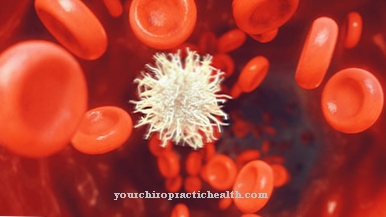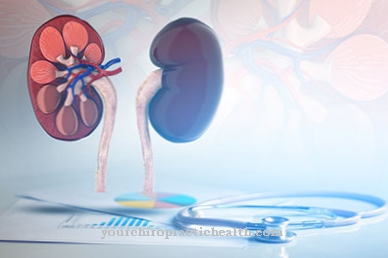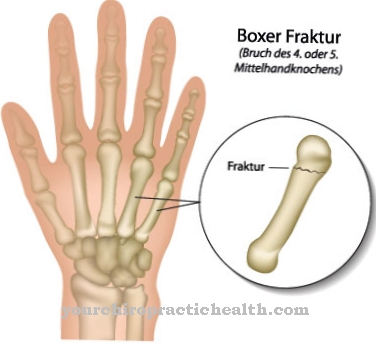The first part of this series of articles on worms and parasites in humans dealt with roundworms, tapeworms and pinworms in children. This post is intended to inform our readers about the tapeworms that we also have. This article provides information about trichinae: Trichinae.
The tapeworm

We distinguish four types of tapeworms: beef, pork, fish and dog tapeworm. The most common is the beef tapeworm. The infestation of the whole human race is estimated at around 50 million. By German standards, an infection of 0.5 percent of the population has recently been reported. Pork, fish and dog tapeworms are rare here.
The tapeworms belong to the flatworms. They are very different in size. While the dog tapeworm is only a few millimeters in size, the fish tapeworm can reach up to 12 meters in length. Tapeworms consist of a head with suction cups with which they hold on to the intestine and a body that can possibly count up to a few thousand individual limbs.
These are bisexual animals (hermaphrodites) in which fertilization takes place within the worm itself. The resulting eggs quickly get to the outside with the repeatedly repelling limbs. When the limbs disintegrate, the eggs are released and can be swallowed by other living beings, such as cattle, pigs, fish or dogs, which serve as intermediate hosts.
The larvae in the eggs pierce the intestinal wall and get into the various organs with the bloodstream. This is where they grow up and are now called bladder worms or fin.
These Finns slowly enlarge but can never become sexually mature. To do this, they first have to be swallowed by an ultimate host, the human being. The blisters in the human intestine then rupture, and a tapeworm forms from the head, which is stuck in every fin, which is usually fully grown in around 70 days. While beef, pork and fish tapeworm can only reproduce in the human organism, the dog tapeworm only occurs in the human body as a bladder or fin. At this stage it can reach considerable proportions and become the size of a head. Man then calls it echinococcus.
Symptoms, ailments & signs
Tapeworms often have a significant lifespan, up to 20 years can. Under certain circumstances, one person can even have several tapeworms. These worms are transmitted through the consumption of raw meat contaminated with fins or poorly cooked or under-smoked fish, which is also contaminated.
The consumption of flawless meat and fish cannot cause tapeworms. The Finns get into the human intestines and develop into tapeworms there. Incidentally, the eggs of the dog tapeworm are transmitted to humans through unsanitary handling of tapeworm-infected dogs.
Tapeworms lead to a wide variety of symptoms. You can observe both cravings and loss of appetite, as well as vomiting, nausea, diarrhea and constipation, headaches and a feeling of pressure in the body. Those affected can lose weight considerably. The fish tapeworm excretes a toxin that in some cases leads to severe anemia. The dog tapeworm's large fin bladders can cause tumor-like appearances.
In severe cases, bowel obstruction can occur. An ileus manifests itself as a very hardened abdominal wall, cramps and abdominal pain. Tapeworms can also cause anorexia or cravings. This can lead to weight problems - weight loss usually occurs. A fish tapeworm can lead to anemia.
This manifests itself through physical and mental dysfunction, but also through external signs such as paleness, sweating and sunken eye sockets. Usually dizziness, visual disturbances and other complaints occur, which increase in intensity as the disease progresses. An infection with the dog tapeworm manifests itself through the characteristic blisters, which resemble tumors and cause severe pressure pain.
Tapeworm infestation can also lead to serious gastrointestinal or brain diseases. If the brain is affected, meningitis or encephalitis can occur, which relatively quickly leads to neurological failure symptoms and ultimately causes permanent damage. Tapeworm infestation can be clearly identified on the basis of the symptoms and complaints mentioned and in any case requires immediate treatment by a specialist.
Complications
Tapeworm infection can lead to a number of complications if left untreated. Initially, the parasite causes weight loss and subsequently gastrointestinal complaints. If no action is then taken, the tapeworm will continue to grow and wellbeing can decrease significantly. As a result, the tapeworm attacks the internal organs and increases the risk of gallbladder and pancreatic inflammation, intestinal obstruction and appendicitis.
If there is a hematogenous infection, the parasite can block the blood vessels and cause an embolism. If the tapeworm infection continues, there is also the risk that larvae will settle in the organs: epilepsy, visual disturbances, skin diseases and damage to the skeletal muscles can result, depending on the extent and location of the infestation. A tapeworm in the brain can lead to life-threatening disorders such as meningoencephalitis.
The risk of such complications increases with an unhealthy lifestyle with an unbalanced diet and poor hygienic conditions.In general, the earlier the tapeworm is diagnosed, the more likely a full recovery is without long-term consequences. A quick clarification of the typical symptoms is therefore advisable in any case.
Treatment & Therapy
The presence of a tapeworm is relatively easy to detect because the limbs are constantly excreted in the stool. They are flat, whitish structures that are reminiscent of pieces of pasta. Various effective and fairly non-toxic drugs for tapeworms are known today. Preparations that contain tin, bromocresol and chloronitro compounds are particularly suitable for the abortion of such worms. Although it is entirely possible to conduct outpatient cures, it is generally advisable to stay in hospital for several days.
The treatment can only be said to be a sure success if the tapeworm's head has also come off. With the newer drugs, however, it usually comes to the head dew, so that the detection is often not successful. You can only say after a few months whether the treatment was successful or not. The fins of the dog tapeworm, the echinococci, must be surgically removed.
Doctors & therapists in your area
Outlook & forecast
With a tapeworm, the outlook and prognosis depend, among other things, on the type of tapeworm and the patient's constitution.
A beef tapeworm can usually be treated by a family doctor who, if the outcome goes well, predicts a full recovery within two to three weeks. The pork tapeworm may have to be surgically removed, but if treated early it will also be positive. Under certain circumstances, however, a relapse can occur and the therapy must be carried out again.
The prognosis for fish tapeworms is favorable. After a successful treatment, the vast majority of patients recover without further complications. The prospect is less positive with an Echinococcus, which must be surgically removed in any case. Tapeworm infestation can be fatal if treatment is given too late or not at all.
Basically, the outlook and prognosis for a tapeworm are positive - provided that the treatment is carried out early and there are no major complications. In children, the elderly, and sick patients, surgery can cause additional health problems. In the worst case, a tapeworm is fatal for the patient.
Protection & prevention
The best protection against tapeworms is to avoid raw meat and undercooked fish. You can protect yourself against the fins of the dog tapeworm by paying attention to scrupulous cleanliness when dealing with animals and washing your hands regularly if you have touched dogs.
Aftercare
A parasite cure usually takes a favorable course. Follow-up care can then only consist of prevention. Patients bear a high degree of personal responsibility. Raw meat and undercooked fish are to be avoided. Hands should be washed after contact with animals. Doctors usually impart these practical tips as part of the initial treatment.
In Germany, people only very rarely get the tapeworm. Countries with inadequate hygienic standards are considered the main areas of infection. Those who repeatedly travel to such regions can get infected again and again when they visit again. The body does not build immunity. A disease can be detected with a stool sample. Imaging methods such as CT and MRI can also provide clarity.
While patients can only avoid an occurrence by avoiding certain risk foods and contact with animals, the timing of treatment is crucial for a weak course. The earlier a drug or surgical therapy starts, the more favorable the prognosis. If treatment is not taken, the tapeworm can even be fatal. The risk of re-infection is the same for everyone. In older people, a disease tends to take an unfavorable course.
You can do that yourself
Any suspicion of a tapeworm should always lead to a doctor first. Whether it is a tapeworm can mainly be determined from the chair, which has long, whitish structures that are reminiscent of pasta. This is usually accompanied by unusual weight loss and a general feeling of illness. If one or more of these symptoms occur, it is important to see a doctor.
In addition to medical treatment, dietary measures are particularly recommended. Fermented foods such as sauerkraut, apple cider vinegar or kombucha stabilize the intestinal flora.
Likewise papaya seeds, onions and garlic as well as essential oils from oregano or eucalyptus. Wormwood can be taken in the form of capsules or tea and it kills tapeworms quickly and effectively. In addition, preparations with tin, bromocresol or chloronitro compounds help in the abortion of tapeworms.
In addition to these home remedies, a balanced diet and regular fluid intake are generally important. Raw meat and insufficiently cooked fish should be avoided entirely during a parasite infestation. After the tapeworm has been successfully excreted, increased hygiene, especially when dealing with animals, should be observed in order to avoid renewed parasite infestation.

.jpg)



.jpg)
.jpg)




















